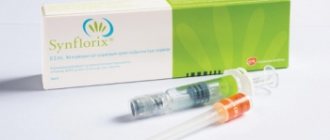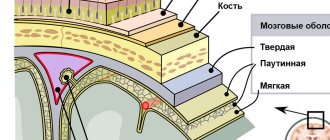pharmachologic effect
This drug is a pneumococcal polyvalent vaccine, which is used for prophylactic purposes - to prevent pneumococcal infections of various localizations.
In particular, the vaccine is intended for the prevention of pneumonia, meningitis , sepsis , and otitis media . The Pneumo 23 vaccination promotes the formation of specific immunity to twenty-three serotypes of Streptococcus pneumoniae bacteria.
After the Pneumo 23 vaccine has been administered once, a person has specific immunity for five years. The drug is widely used in children after reaching the age of two to prevent the development of pneumococcal infection in them.
Definition
Pneumococcal infection is a group of ubiquitous anthroponotic diseases caused by the presence of airborne bacteria S. pneumoniae, which can penetrate the usually sterile environment of the human body, causing serious pathology with high mortality. There are 2 forms of PI - invasive (iPI) (meningitis, pneumonia with bacteremia, septicemia, septic arthritis, osteomyelitis, pericarditis, endocarditis) and non-invasive (pneumonia without bacteremia, acute otitis media, sinusitis, etc.) forms.
Indications for use
The use of Pneumo 23 is indicated to prevent the development of pneumococcal infections of different localizations. Recommended for use by children from the age of two.
The vaccine is recommended for anyone who has an increased risk of becoming infected with Streptococcus pneumonia. In particular, this vaccination should be given to elderly people, children with weakened bodies, who are subject to frequent hospitalization.
Vaccination is also recommended for children who often suffer from diabetes , chronic bronchitis, respiratory and heart failure.
People who abuse nicotine and alcohol, those who have weakened immunity, and leakage of cerebrospinal fluid are also at risk of contracting the infection.
Composition of the drug
Each dose of the vaccine contains 23 antigens (purified bacterial cell wall polysaccharides) to the corresponding pneumococcal serotypes, 0.025 mg each. The auxiliary substance is a phenolic buffer solution consisting of phenol, sodium chloride, sodium hydrogen phosphate dihydrate, sodium dihydrogen phosphate dihydrate, water for injection.
Medicinal properties
Due to the fact that Streptococcus pneumonia antigens enter the body, immunity to 23 serotypes of this pathogen is developed. These are the most common types of bacteria and are responsible for 90% of pneumococcal infections. They are mostly immune to penicillin. The duration of the body's specific immune reaction ranges from 3 to 5 years.
Contraindications
Vaccination with the drug should not be given to people who have a history of hypersensitivity after receiving the pneumococcal vaccine.
Immunization is not carried out for people suffering from acute infectious and non-infectious diseases, hyperthermia. The vaccine should not be administered during a relapse of chronic diseases.
Vaccination is allowed only after the patient has entered stable remission or has fully recovered.
The drug should not be administered to people who have received a pneumococcal vaccine over the previous three years (with the exception of people at risk, as well as those who have received immunosuppressive treatment).
It should be taken into account that a recent pneumococcal infection is not a contraindication to the Pneumo 23 vaccination.
Post-vaccination reactions
All reactions of the body to vaccination against pneumococcus can be divided into local and general. Local ones are observed in approximately 5% of vaccinated patients and consist of slight thickening, soreness and redness of the skin at the injection site. Usually these phenomena disappear on their own within 1-2 days and do not require medical attention.
General post-vaccination reactions are even less common (approximately 2% of cases). These include general malaise and a slight (low-grade) increase in temperature.
Side effects
After the patient receives Pneumo 23, he may develop some local negative reactions: the appearance of compaction, swelling, pain, hyperemia in the place where the drug was injected.
In most cases, such manifestations are moderate and disappear very quickly, and no specific treatment is required.
Very rarely (in isolated cases) during the use of Pneumo 23, severe local manifestations may develop, including the Arthus phenomenon . All these side effects go away without additional treatment.
People whose bodies have a high level of anti-pneumococcal antibodies may develop hyperthermia, and sometimes, very rarely, the body temperature can rise to 39 degrees or higher.
There is information about isolated cases of arthralgia, adenopathy, skin rash and anaphylactoid reactions. If these or other undesirable manifestations develop, you should immediately inform your doctor.
Vaccination Pneumo 23, instructions for use (Method and dosage)
The instructions for Pneumo 23 stipulate that the vaccine is used parenterally. This solution must be administered directly from the syringe in which the product is packaged by the manufacturer.
The drug is administered subcutaneously or intramuscularly. Please note that it cannot be administered intravenously.
It is imperative that this vaccine is administered in a specialized medical facility by a qualified specialist.
Before receiving a dose of the vaccine, the patient must be examined by a specialist. If a person has a feeling of general weakness, hyperthermia, or exacerbation of chronic diseases, vaccination should be postponed.
After the drug has been administered, the person must remain under the supervision of a specialist for 30 minutes. If he develops anaphylactoid reactions, the patient is given emergency treatment.
The general scheme for using the vaccine is determined by the doctor. As a rule, during the first vaccination, one dose (0.5 ml) of Pneumo 23 is administered.
Revaccination is advisable after at least three years. When revaccinating, a person should also receive one dose (0.5 ml) of the product.
The permissible interval (three years) between the administration of Pneumo 23 can be reduced for people who have an increased likelihood of developing pneumococcal infection, as well as for those who have recently received immunosuppressive therapy.
The effectiveness of vaccine prevention
The effectiveness of any preventive measure, including CAP, is the degree to which the desired result is achieved through the implementation of this measure in the absence of side effects or their presence within established limits. The epidemiological, economic and social effectiveness of VP are highlighted.
The epidemiological effectiveness of CAP is determined by the degree of its influence on the epidemic process and is manifested in reducing morbidity and preventing the occurrence of new cases of infection among the population. When considering the epidemiological effectiveness of an event, it is customary to evaluate its potential and actual effectiveness.
The potential effectiveness of the VP is assessed by 2 main indicators: the efficiency index and the efficiency coefficient, or security indicator.
The index of the effectiveness of VP against a particular infection is the ratio of morbidity rates in the group of those vaccinated and those not vaccinated with this drug. It shows how many times the incidence rate of vaccinated individuals is lower than that of unvaccinated individuals.
The effectiveness coefficient characterizes the proportion of vaccinated individuals whose protection from infection was ensured by vaccination with this drug. The effectiveness coefficient is the most preferable indicator, since it shows only the effect of vaccination, without the influence of other preventive factors that may occur in the control and experimental groups.
The actual epidemiological effectiveness of CAP is determined by the actual reduction and prevention of morbidity as a result of CAP with a specific drug according to a specific regimen. The actual epidemiological effectiveness of VP is assessed during the period of its mass use. Assessing the actual effectiveness of EP is not a one-time study, but an ongoing analysis during epidemiological surveillance of infection, being a component of operational and retrospective epidemiological analyses.
The potential epidemiological effectiveness of VAP depends primarily on the immunogenicity of the vaccine, as well as on the choice of vaccination tactics and vaccination schedule.
The actual epidemiological effectiveness, assessed in real practical healthcare conditions with mass CAP, is usually lower than the potential effectiveness tested with optimal organization. The actual effectiveness is largely determined by the quality of the drug used and the quality of the organization and conduct of the event. The greater the difference between potential and actual effectiveness, the more reasons to doubt the quality of the means and measures and strengthen control over the EP. However, differences in effectiveness may be due to other reasons, for example, changes in the epidemiological situation, the evolution of the epidemic process of infection, which require changes in vaccination tactics.
The epidemiological effectiveness of VP PI has been assessed in numerous studies. Evidence in favor of the epidemiological effectiveness of vaccination is the decrease in the incidence of PIs in general and individual infections, primarily iPIs, recorded in various regions of the world.
special instructions
This vaccine is especially indicated for people who suffer from sickle cell anemia , as well as people with asplenia ; those who have recently had a splenectomy or people who are about to undergo a splenectomy.
It should be noted that if revaccination is carried out earlier than the required period, the person may experience severe local side effects after the injection.
Since there is a possibility of severe side effects (in particular, the Arthus phenomenon), before administering the drug, you need to evaluate the benefits of vaccination and take into account all contraindications.
If a person is receiving immunosuppressive treatment, the immune response to Pneumo 23 may be suppressed.
One dose of the vaccine provides effective protection.
Analogs
Level 4 ATX code matches:
Prevenar
Analogues of this vaccine are the drugs Prevenar , Prevenar 13 .
Only a doctor can choose the most optimal remedy after an individual consultation.
Prevenar 13 or Pneumo 23 - which vaccine is better?
The Prevenar 13 vaccine contains fewer serotypes than Pneumo 23. But reviews often contain information that when using Prevenar, local side effects occur more often.
At the same time, Prevenar 13, unlike Pneumo 23, can be administered to children up to two years of age. The attending pediatrician will tell you which vaccine is best to use to immunize a child.
The advisability of using these vaccines is described in more detail by specialists, for example, Dr. Komarovsky.
During pregnancy and lactation
during the first and second trimesters of pregnancy . But if there are serious indications, immunization can be carried out in the third trimester of pregnancy under the close supervision of a doctor.
If a pregnant woman has been vaccinated, after administering the drug she should be under the supervision of a doctor for at least three hours.
Vaccination during lactation is acceptable. There is no need to interrupt breastfeeding.
Our doctors
Kedrinskaya Larisa Ivanovna
Experience 18 years / Doctor of the highest category, Candidate of Medical Sciences / General practitioner, cardiologist
To make an appointment with a doctor
Shelkovnikova Maria Olegovna
28 years of experience / Candidate of Medical Sciences / General Practitioner
To make an appointment with a doctor
+
Reviews about Pneumo 23
There are often opinions on the Internet about how effective the Pneumo 23 vaccination is. There are various reviews. Many parents write that after vaccination, the child began to suffer from infectious diseases much less. After vaccination, the diseases disappear quickly, without significant complications. It is important to vaccinate correctly and follow all doctor's advice.
Side effects are rarely mentioned in reviews; local manifestations are mainly noted, which quickly disappear. When discussing how effective the Pneumo 23 vaccine is, reviews from doctors are mostly positive.
The famous pediatrician Komarovsky, as well as other doctors, recommend vaccination to prevent the development of diseases.
How to help your young child feel comfortable during vaccinations
Vaccination works better when the baby is calm and not afraid. To avoid scaring your child, try the following:
- Distract and calm your baby, hug him, talk softly to him
- Be calm, confident, smile.
- Maintain eye contact with your child.
- Communicate with your child, show that you are nearby and everything is fine.
- Let your child hold a favorite toy or blanket.
- Ask your doctor if you can hold your baby on your lap and gently rub his back during vaccination.
- Be sure to praise your child after vaccination, tell him how great he is and how proud you are of him. Support your baby, even if he couldn't help but cry.





